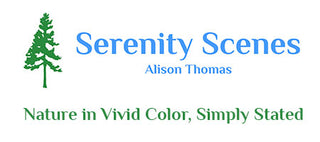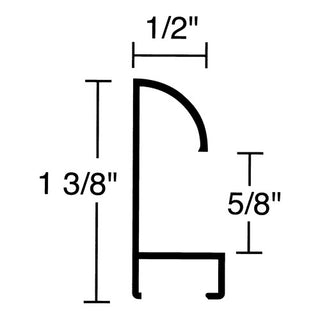Archival framing, especially for digital art and photography is the difference between passing a piece of art down to your children and selling it at a yard sale in 10 years.
Most all photography and digital art today is printed on an ink jet printer so the first important part is your paper and ink. There are two kinds of ink, dye ink and pigment ink. While both dye inks and pigment inks have been improved over the years, pigment ink is still the best for longevity. Epson pigment ink, which I use, is rated for 250 years. It won't last that long though, unless you use the right paper as well.
This brings us to another choice, art paper vs. photo paper. Fine art paper is specifically made for high quality and longevity. One addition I make to my prints is to print on heavy paper. I use a hinge mounting technique and with the panoramas a heavy paper keeps them from becomming wavy in the frame.
Hinge mounting vs. dry mounting. Both are ways of attaching the print to the backing board. Because a print should never be placed directly against the glass or plexiglass your backing board is most likely going to be larger than your print to allow for matting. The one benefit of hinging over dry mounting is that hinging allows to print to be removed easily from the backing board. With dry mounting you cannot easily reframe your print to a larger or smaller mat size. With hinging you can easily remove your print and attach it to a different size backing board. Dry mounting will keep you print flat but it is also permanently attached to the backing board. Hinging allows the print to breathe which means it can respond to changes in temperature or humidity and stay flat. If moved from extreme humidity or heat into a home or office environment it may take a few days to resolve.
On to the matting. The most important component of mat board that is touching your artwork is that it be acid-free and lignin-free. You can see a description of the different kinds of matboard below. I use AlphaMat. There is a higher quality mat board called museum mat but it is used primarily by museums for rare works of art. I also use an acid-free archival backing board.
And last the glass or acrylic to protect your artwork from the elements. UV resistant glass or plexiglass is the thing to look for. Strangely enough I've found glass to be more durable and travels better without damage than acrylic so I use TruVue Conservation Clear glass. It is reflective and the only non-reflective glass I have found that doesn't cut down on viewing the image is TruVue Museum glass which is quite expensive and difficult to work with. If you really need non-reflective or need acrylic for the lower weight you can always order a print and take it to a framer who will have more options for you.
A little extra reading:
https://www.adorama.com/alc/faq-whats-the-difference-between-dye-based-and-pigment-ink/
https://www.canson-infinity.com/en/fine-art-paper-and-photo-paper-what-difference
https://www.redimat.com/types-of-picture-mat-board.html

